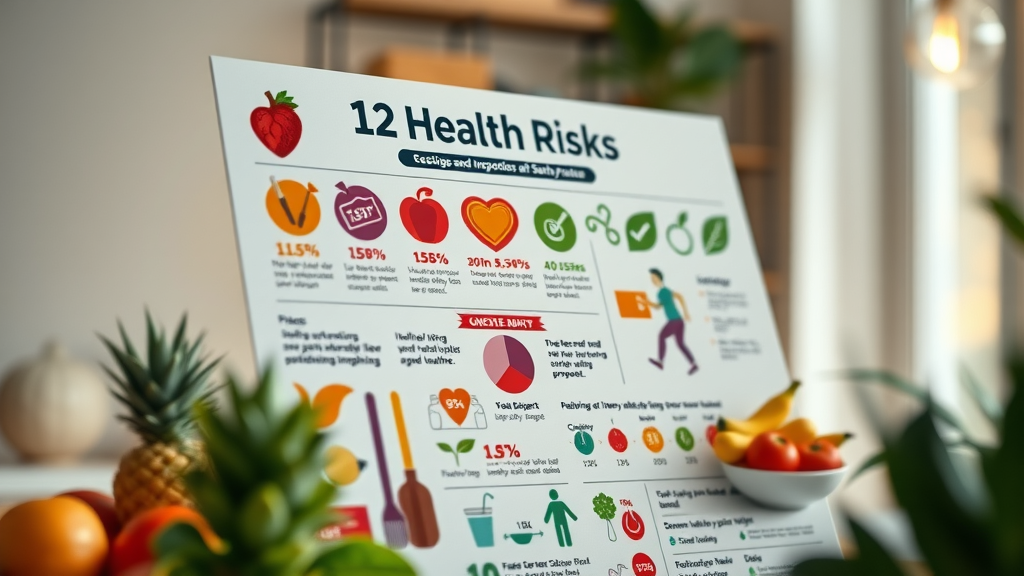Are you tired of feeling sluggish and overwhelmed by life’s demands? Embracing a healthy lifestyle is not just a trend; it’s a transformative journey that can elevate your well-being and happiness. In “Transform Your Life: 5 Secrets to a Healthy Lifestyle!” we’ll unveil the powerful secrets that can shift your perspective and enhance your daily routine. By mastering these essential principles, you can unlock a vibrant, energized version of yourself. Let’s take the first step together toward a healthier, more fulfilling life—because you deserve to thrive!
Understanding the Importance of a Healthy Lifestyle
Living a healthy lifestyle is crucial for maintaining a positive physical and mental state. It directly impacts your overall well-being, longevity, and quality of life. By prioritizing health, you can significantly reduce the risk of chronic diseases, enhance your mood, and improve your productivity.
Benefits of a Healthy Lifestyle
| Benefit | Description |
|---|---|
| Increased Energy Levels | Regular physical activity boosts energy and stamina. |
| Weight Management | Healthy eating habits help maintain or lose weight. |
| Reduced Disease Risk | Lowers the risk of heart disease, diabetes, etc. |
| Mental Clarity | Good nutrition and exercise enhance cognitive function. |
| Improved Mood | Healthy habits contribute to emotional stability. |
“Healthy lifestyle choices can lead to a longer, more fulfilling life.” – American Heart Association
Key Takeaways
- A healthy lifestyle contributes to longevity.
- It enhances mental and physical wellness.
- Regular habits prevent chronic diseases.

Key Components of a Healthy Lifestyle
Balanced Diet
A balanced diet is the cornerstone of a healthy lifestyle. It includes appropriate portions of macronutrients (carbohydrates, proteins, and fats) and micronutrients (vitamins and minerals). Here’s how you can ensure you’re eating a balanced diet:
- Macronutrients: Aim for a mix of whole grains, lean proteins, healthy fats, and plenty of fruits and vegetables.
- Micronutrients: Incorporate a variety of colorful foods to cover your vitamin and mineral needs.
Macronutrients and Micronutrients Breakdown
| Nutrient Type | Sources |
|---|---|
| Carbohydrates | Whole grains, fruits, vegetables |
| Proteins | Lean meats, beans, legumes |
| Fats | Avocados, nuts, olive oil |
| Vitamins | Fruits, vegetables, whole grains |
| Minerals | Nuts, seeds, leafy greens |
“Eating a variety of foods is essential for a balanced diet.” – Harvard Nutrition Source

Regular Exercise
Engaging in regular exercise is vital for a healthy lifestyle. Aim for a combination of aerobic, strength, and flexibility exercises. Here’s a breakdown of each type:
- Aerobic Exercise: Activities like running, swimming, or cycling that boost heart health.
- Strength Training: Lifting weights or bodyweight exercises to build muscle and bone density.
- Flexibility: Stretching or yoga to enhance mobility and reduce injury risk.
Exercise Recommendations
| Type of Exercise | Frequency |
|---|---|
| Aerobic | 150 minutes per week |
| Strength Training | 2 days per week |
| Flexibility | Daily stretching sessions |

Mental Health
Mental health is an often-overlooked aspect of a healthy lifestyle. Taking care of your mental well-being is just as important as physical health. Here are some strategies for maintaining mental wellness:
- Mindfulness Practices: Techniques like meditation or yoga can help reduce stress.
- Social Connections: Engage with friends and family for emotional support.
- Professional Help: Seek therapy if needed for mental health concerns.

Healthy Eating: Practical Tips
Eat Smart
Eating smart is a fundamental aspect of maintaining a healthy lifestyle. Here are some practical tips:
- Meal Planning: Plan your meals in advance to avoid unhealthy snacking.
- Portion Control: Use smaller plates to help control serving sizes.
- Mindful Eating: Eat slowly and pay attention to your hunger cues.
Shop Smart
Grocery shopping smartly is crucial for a healthy lifestyle. Here’s how:
- Read Labels: Check for added sugars and unhealthy fats.
- Choose Whole Foods: Opt for fresh produce, whole grains, and lean proteins.
- Avoid Processed Foods: Limiting fast food and pre-packaged meals can enhance your diet.

Creating a Supportive Environment
Join Healthy for Good
Joining a community or group focused on health can boost your motivation. Benefits include:
- Group Activities: Engage in fitness classes or healthy cooking workshops.
- Support Systems: Share experiences and insights with like-minded individuals.
Family Involvement
Involving your family in healthy activities can make adopting a healthy lifestyle more enjoyable. Here are some family activities to consider:
- Cooking Together: Prepare healthy meals as a family.
- Outdoor Adventures: Go hiking or biking together.
- Fitness Challenges: Create friendly competitions to encourage exercise.

Health Risks of Unhealthy Lifestyle Choices
Adopting unhealthy habits can lead to numerous health risks. Common issues include:
- Obesity: Excess body weight can lead to various health problems.
- Heart Disease: Poor diet and inactivity are major contributors to heart issues.
- Diabetes: Uncontrolled weight gain increases the risk of developing diabetes.
Health Risks Overview
| Health Risk | Consequences |
|---|---|
| Obesity | Increased risk of chronic diseases |
| Heart Disease | Can lead to heart attacks or strokes |
| Diabetes | Affects blood sugar regulation |

Practical Steps to Improve Your Lifestyle
Quit Smoking
Quitting smoking is one of the best decisions you can make for a healthy lifestyle. Consider these alternative coping mechanisms to aid in the process:
- Nicotine Replacement Therapy: Patches or gum can help ease withdrawal symptoms.
- Support Groups: Join a community for encouragement and accountability.
Get Regular Checkups
Regular medical checkups are essential for maintaining your health. Recommended screenings based on age include:
- Blood Pressure Checks: At least once a year.
- Cholesterol Tests: Every 4-6 years, depending on risk factors.
- Cancer Screenings: Follow your doctor’s recommendations for age-appropriate screenings.

Healthy Lifestyle: Key Takeaways
Embracing a healthy lifestyle involves making informed decisions about diet, exercise, and mental well-being. Here are some key takeaways:
- Establish a balanced diet rich in nutrients.
- Engage in regular exercise for physical health.
- Prioritize mental health and seek support when needed.
- Adopt smart eating and shopping habits.
- Involve your family and community in your health journey.

Frequently Asked Questions (FAQs)
-
What is a healthy lifestyle?
A healthy lifestyle encompasses balanced eating, regular physical activity, and maintaining mental well-being. -
How can I start living a healthier life?
Begin by setting small, achievable goals in your diet and exercise routine, and seek support from friends or family. -
Are there quick fixes for a healthy lifestyle?
While there are no quick fixes, consistent small changes can lead to significant improvements over time. -
What are some healthy meal options?
Healthy options include salads, whole grains, lean proteins, and plenty of fruits and vegetables. -
How can I track my progress?
Use apps or journals to log your meals, exercise, and mental health activities to stay accountable.
Conclusion
In conclusion, adopting a healthy lifestyle is a journey that requires dedication and effort. By focusing on balanced nutrition, regular exercise, and mental wellness, you can enhance your quality of life and reduce the risk of chronic diseases. Remember, small changes can lead to significant results, and the journey to health is always worth it.
Key Takeaways Summary
- Prioritize a balanced diet with macronutrients and micronutrients.
- Engage in a variety of exercise routines for overall fitness.
- Maintain mental health through mindfulness and social connections.
- Practice smart eating and grocery shopping habits.
- Foster a supportive environment with family and community involvement.
By following these steps, you are on your way to transforming your life through a healthy lifestyle!
 Add Row
Add Row 
 Add
Add 


Write A Comment